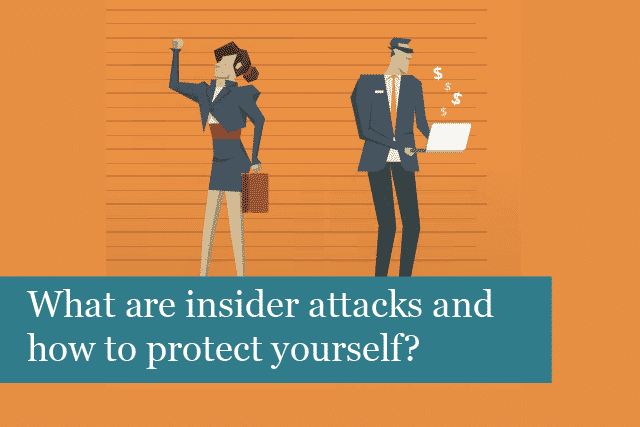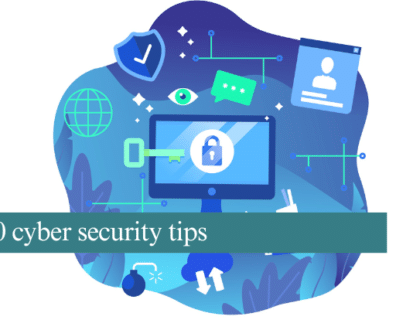
With so many cyber threats around these days, many companies make the mistake of only watching out for threats that come from external sources. While these types of data breaches are increasing, there’s an often-overlooked attack that many businesses forget. These are threats that come within the company.
While this realization can be upsetting, it’s crucial to take insider threats as seriously as those from external sources.
In this article, we’ll go over the types of insider attacks and the signs that go with these attacks.
What is an Inside Attack?
An insider attack is one that’s conducted when a person, who is part of your company, uses their network access to harm the business. The Cybersecurity & Infrastructure Security Agency has categorized insider threat types as “sabotage, theft, espionage, fraud, and competitive advantage,” and they are “often carried out through abusing access rights, theft of materials, and mishandling physical devices.”
While insider attacks can come from employees directly within the company, they can come from anyone who has access to your company’s network.
What’s more, this threat is also increasing along with external cyber breaches. Insider attacks have grown by a third just in the last couple of years. The frequency of these attacks has grown by almost half in the same time period.
Technology continues to advance, providing digital solutions that have access to sensitive data. What does this mean for your company? The probability of an insider attack on your company is only going to grow.
How Do Internal & External Attacks Differ?
Internal attacks come from someone within the company. This person will already have access to company data. On the other hand, external attacks happen from outside the company. The criminals don’t have access to company data but are looking to access and steal it.
While the methods used in internal and external attacks may be similar, the main difference is in the person committing the crime. One comes from outside criminals, while the other comes from someone inside the company.
What are the Different Types of Insider Attacks?
Just as there are many ways external hackers gain access to the network, there are many ways an insider can attack the company.
1). Collaborator
This type of attack involves an employee who wants to intentionally cause damage. In this type of attack, the employee will purposely leave data unprotected. This means criminals outside the company gain access to the information.
This type of attack is usually a type of corporate espionage.
2). Lone Wolf
This type of attack usually comes from an angry employee, a contractor, or another person who has access to the company data. They are looking to wreak havoc and cause harm to the business.
3). Pawn
A pawn attack involves a person who doesn’t realize they’re being targeted or understand they are the cause of the issue.
In this type of attack, the employee may be targeted by phishing efforts or social engineering. This type of attack comes from an external threat, which gains access to the employee’s credentials. This makes the employee an “insider;” this makes the employee a tool of the external hacker.
4). Goof
A goof attack happens when a person within the company does not follow security policy and measures. This can be caused by employees who feel it takes too much effort to follow the security measures. However, their lack of action puts the company at risk.
They may leave company login information in the cloud, which is not secure, as well as being easier to access.
While the employee is not causing the problem directly, their actions (or lack of action) can compromise company data, making it accessible to outside criminals.
Methods Used for Insider Attacks
There are several methods that are used for insider attacks, including:
Internal hacking: this is an intentional act to steal data, leak access to the network, or corrupt sensitive data.
Email hacks: these usually involve phishing and are a common type of insider attack. In this attack, emails are made to look as if they come from a trusted source. Inside the email, criminals may place files or a malicious link that provides hackers access to the company network.
Ransomware: this is similar to the email hack and involves the installation of ransomware or malware. The attack may be performed through the introduction of a virus. The virus then causes the system to be locked down by the hackers, who then demand a payment to release the system back to the company.
Mobile & cloud storage attacks: with more companies using mobile and cloud storage services, this type of attack is on the increase. The servers are usually very protected, so this attack usually comes from an employee who has access to the servers and is able to download data from the cloud onto their own device.
How to Protect Your Business from Insider Attacks
When it comes to protecting your business from insider attacks, it’s all about preventing, identifying, and stopping potential attacks. Here are some steps to take to keep your business safe:
Use employee monitoring software: this type of software monitors employee behavior and allows you to set uses for how the data is handled, as well as setting triggers that go off when there’s suspicious activity detected.
Safety-first cybersecurity policy: it’s imperative to develop and establish a safety-first cybersecurity policy for the entire company. The policy should establish guidelines for who has access to what type of data, which means setting specific rules for each employee. Employees should only have access to the data needed for their specific job.
Cybersecurity training: is another crucial step your company can take to stay safe from insider attacks. Educating employees and have reminder training on the importance of keeping data secure is another way to ensure employees don’t fall into the trap of phishing and other schemes.
While not all insider attacks are intentional, it is essential to protect your business from them. Taking the steps in this article can go a long way to keeping your company data safe from insider attacks.
Recommended Posts

IT Simplified: What Is A Firewall?
21st March 2025

10 cyber security tips
14th March 2025

